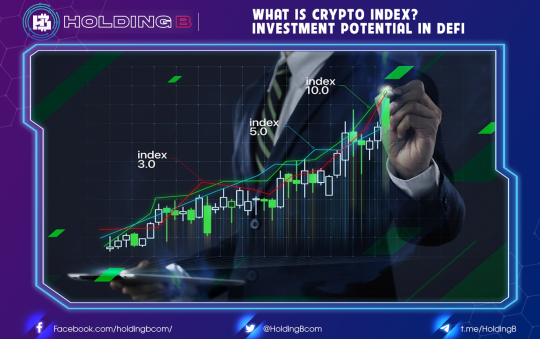What is Cardano?
Cardano is one of the biggest cryptocurrencies by market cap. It’s designed to be a next-gen evolution of the Ethereum idea — with a blockchain that’s a flexible, sustainable, and scalable platform for running smart contracts, which will allow the development of a wide range of decentralized finance apps, new crypto tokens, games, and more.
As of March 2021, however, smart-contract functionality has yet to be rolled out by developers. An upgrade scheduled for the second quarter of 2021 will unlock smart-contract features, bringing Cardano one step closer to its goal of providing developers with a blockchain platform that is robust, secure, scalable, and highly energy-efficient.
Much like the Ethereum blockchain’s native cryptocurrency is ETH, the Cardano blockchain’s native cryptocurrency is ADA — which can be bought or sold via exchanges like Coinbase. Today, ADA can be used to store value (perhaps as part of your investment portfolio), send and receive payments, and for staking and paying transaction fees on the Cardano network
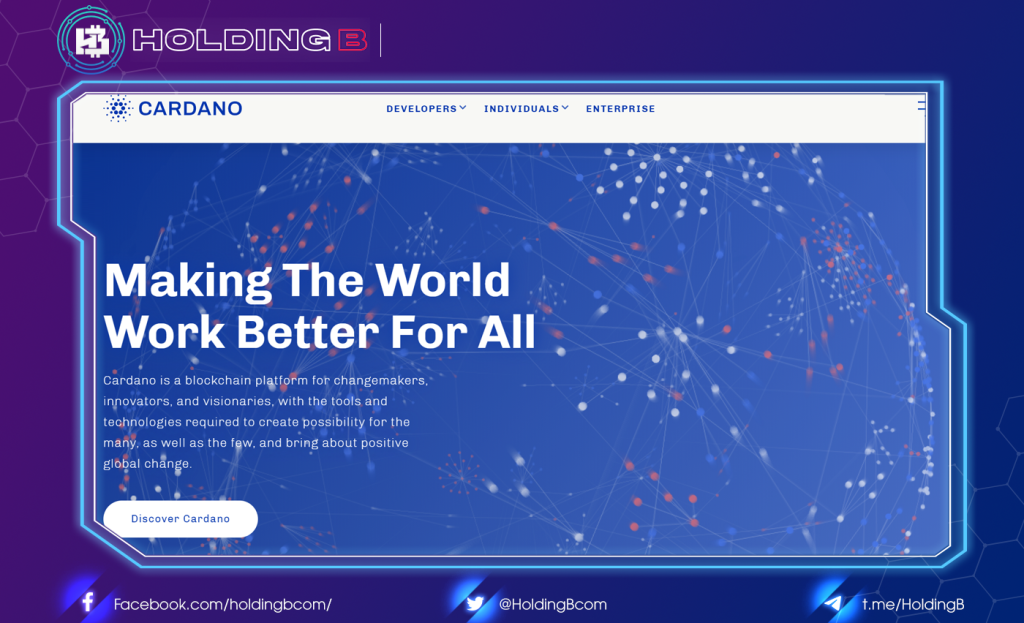
Features of Cardano
Cardano helps solve the three big problems of Blockchain, including:
- Scalability (scalability).
- Interoperability (interoperability).
- Sustainability (sustainability).
Scalability
When it comes to scalability, you immediately think of transactions per second (TPS). But for Cardano, scalability consists of three elements:
- Transaction Per Second (TPS): Cardano uses the Ouroboros consensus algorithm, which belongs to the Proof of Stake group.
- Network: To increase the bandwidth of the network, Cardano uses RINA (Recursive Inter-Network Architecture) technology to divide the network into many subnetworks, and these subnetworks can interact with each other if needed.
- Data Scaling: To reduce the data size of each transaction, Cardano is paying attention to two solutions, Subscriptions, and Sidechains.
Interoperability
Currently, there are many Blockchain platforms, but these Blockchains cannot communicate and interact with each other. According to the roadmap, Cardano will have a solution for interoperability between different Blockchains after the Goguen phase (I will detail it below).
Sustainability
The sustainability of a Blockchain project is very important, the problem here is how to balance the interests of the miner/node and the project development organization so that the project can operate stably in time. long?
In this case, the Cardano Foundation will need funding to develop Cardano after the IOHK contract ends in 2020.
Therefore, Cardano is thinking of creating a reserve fund like Dash did. That is to collect a portion of ADA when a new block is generated.
Compare Cardano vs Ethereum
As you can see, Cardano and Ethereum were both born in the same year in 2015, but Ethereum has a faster growth rate of dapps than Cardano.
This is possible because Cardano took 2 years to prove their theory and is preparing to add smart contracts to the network when it comes to the Goguen phase.
But Cardano has a transaction speed 10 times faster than Ethereum thanks to the use of the Ouroboros consensus algorithm.

Details about ADA Coin
What is ADA coin?
ADA is the official cryptocurrency of the Cardano Blockchain network, released to the market at the end of 2017. ADA was built on the foundation of Cardano from the very beginning with the smallest unit being lovelace (1 ADA). = 105 lovelaces).
Key Metrics ADA
- Ticker: ADA.
- Blockchain: Cardano.
- Consensus: Proof of Stake (PoS).
- Algorithm: Ouroboros.
- Token Type: Coin.
- Contract: 0x3EE2200Efb3400fAbB9AacF31297cBdD1d435D47
- Block time: 20 giây.
- Smallest unit: 10^-5 ADA.
- Transaction Time: 250 TPS.
- Total Supply: 45,000,000,000 ADA.
- Circulating Supply: 32,140,000,000 ADA.
ADA Token Allocation
The total fixed supply of ADA coin is 45 billion and is distributed by the development team into three parts with the following ratio:
- 25,927,070,538 ADA (~57.6%) was marketed via ICO.
- 5,185,414,108 ADA (~11.5%) held by IOHK, Cardano Foundation and Emurgo.
- 13,887,515,354 ADA (~30.9%) for staking rewards.
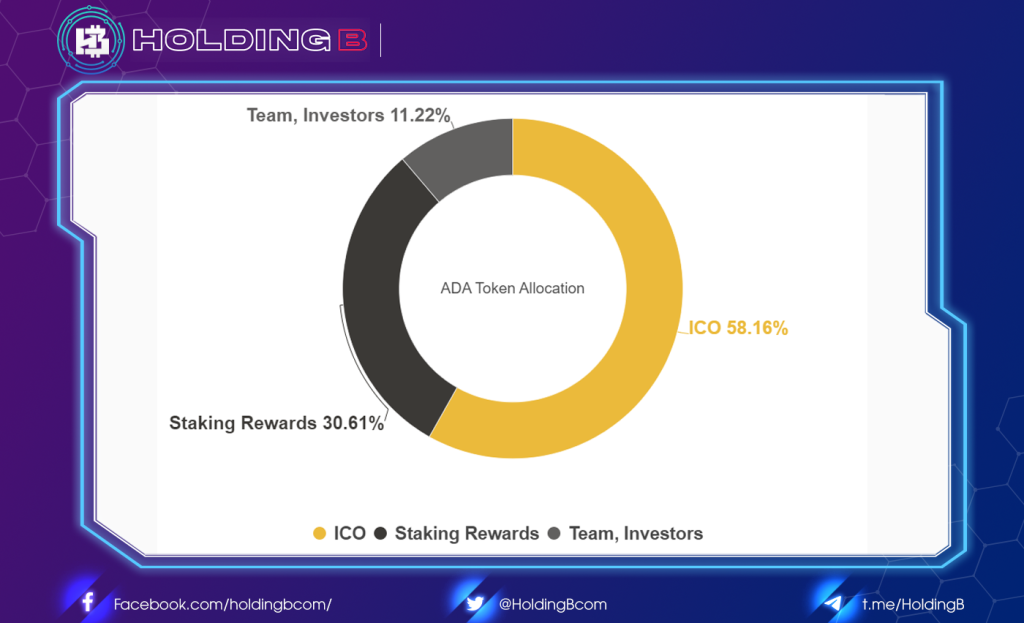
ADA Token Sale
The ADA coin sale started in September 2015 and ended in January 2017, with nearly 26 billion ADA sold after 5 rounds, bringing the total raised to ~$63 million. In there:
- 94.45% was bought by Japanese investor.
- 2.56% was bought by Korean investors.
- 2.39% bought by Chinese investor…
Detailed information about each round of sales is shown in the table below:
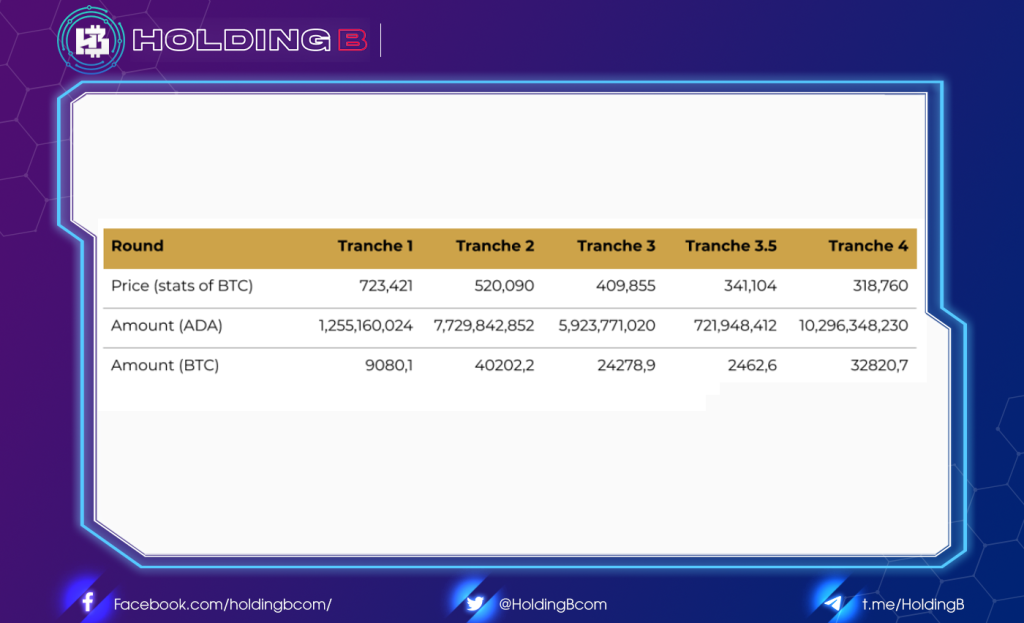
ADA Token Release Schedule
Currently, only the Staking Rewards part remains unlocked because Cardano has not completed the activation of this function in the Shelly testnet version.
ADA Token Use Case
What can ADA coin be used for? Like ETH in the Ethereum network, ADA in the Cardano network has 5 uses as follows:
- Reward: ADA coin used as a block reward for nodes in the network when Cardano started enabling this function in Shelly testnet via Staking.
- Staking: Users can take ADA coins to stake through staking pools and will be rewarded when the node generates a new block.
- Payments: In the future, ADA coins can be used to pay for user issuance of assets (UIA) on Cardano’s platform.
- Currency: ADA is also used as a currency (medium of exchange).
- Transaction Fees on Cardano Blockchain: Coin ADA is used to pay transaction fees in Cardano’s network with the following fee formula:
Transaction Fee = a + b × size
In there:
“a” is the constant against DDoS (distributed denial of service attack) with the current level of 0.155381 ADA.
“b” is the transaction cost constant which is currently 0.0000393946 ADA/byte.
“size” is the size of the transaction in bytes.
How to mine ADA coin?
Cardano uses the Proof of Stake (PoS) consensus mechanism, so you can only staking it, but not ADA (mining) it.
Currently ADA can be staked on Daedalus, Yoroi, Exodust Wallet, or Ledger.
Project development team
Cardano is a project founded by Charles Hoskinson – co-founder of Ethereum and BitShares. Up to now, Cardano is being managed and operated by three main organizations: Cardano Foundation, Emurgo, and IOHK.
Cardano does not specifically disclose each organization’s contribution to Cardano. However, according to my observations, they all have built Infrastructure for Cardano, and contributed to the field of Oracle, Wallet, …
Cardano’s Development Roadmap
With Cardano, they divided the development roadmap into 5 different phases, including:
- Byron: Cardano’s inaugural phase with community development and ADA coin issuance. Regarding the network, it will be operated by designated nodes and the block rewards are burned.
- Shelly: This phase is when the Cardano network becomes more decentralized and staking is implemented.
- Goguen: This is where the Cardano network implements smart contracts and sidechains. This means that developers can develop Dapps on Cardano.
- Basho: Cardano stage optimizes scalability and interoperability between other Blockchains.
- Voltaire: This is the final piece of the puzzle that makes Cardano a community-driven network. Users will be able to vote and vote to influence the development of the network.

The Future of the Cardano Ecosystem
About Stake Pool and ADA token
Cardano will soon enable staking functionality and add smart contracts to the network so developers can build dapps on Cardano. When that happens, the supply of ADA will increase because of inflation due to staking. However, for staking, you need to hold an ADA coin in your wallet and become a node.
Besides staking, Cardano allows the construction of Dapps that will make the network have more transactions, and the amount of ADA collected from transaction fees will increase. This will make more people staking ADA coins for rewards reducing the supply of ADA.
And this has proved extremely effective when up to now, 70% of ADA’s circulating supply has been staked in pools and they are worth more than 50 billion dollars. This is also a factor that helps Cardano stand firmly at #3 in terms of market capitalization after Bitcoin and Ethereum.
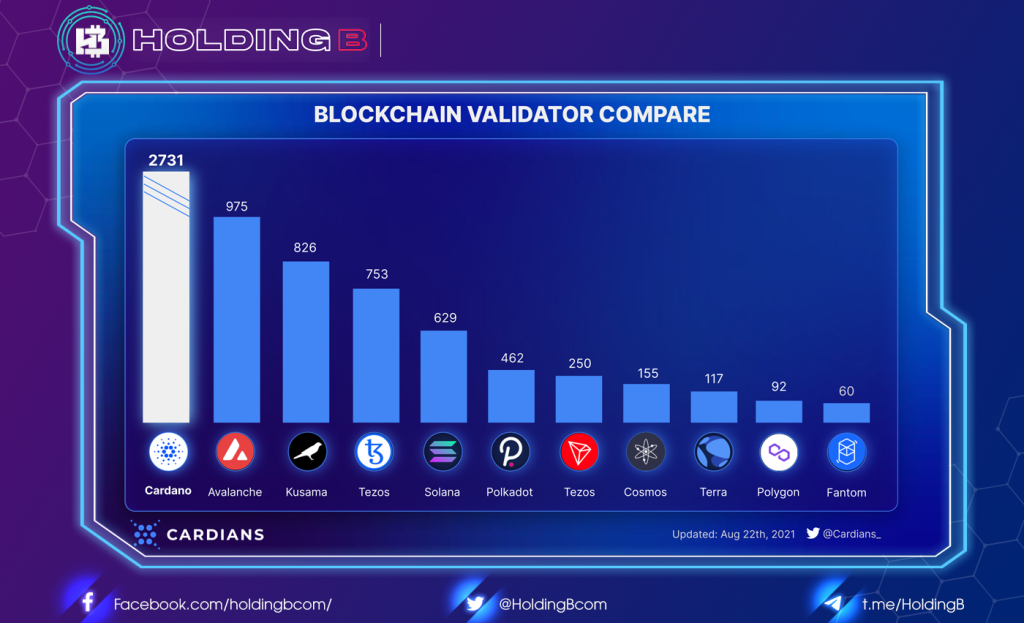
About the Cardano Ecosystem
Currently, Cardano has a plan to launch Smart Contract in August 2021. However, until now they have not launched the Mainnet, but only have a Testnet called Plutus for developers to test.
To develop the DeFi space, Cardano has established the Project Catalyst (Hackathon) program to attract developers to develop and raise capital. This is a positive sign for the Cardano community.
Since the beginning of 2021, the number of projects with a vision to develop on Cardano has increased significantly. However, all of them have not been able to officially deploy on Cardano because they do not have a Smart Contract yet. I hope that Cardano will soon launch Mainnet so that Cardano can catch up with the DeFi field of many other blockchain platforms.
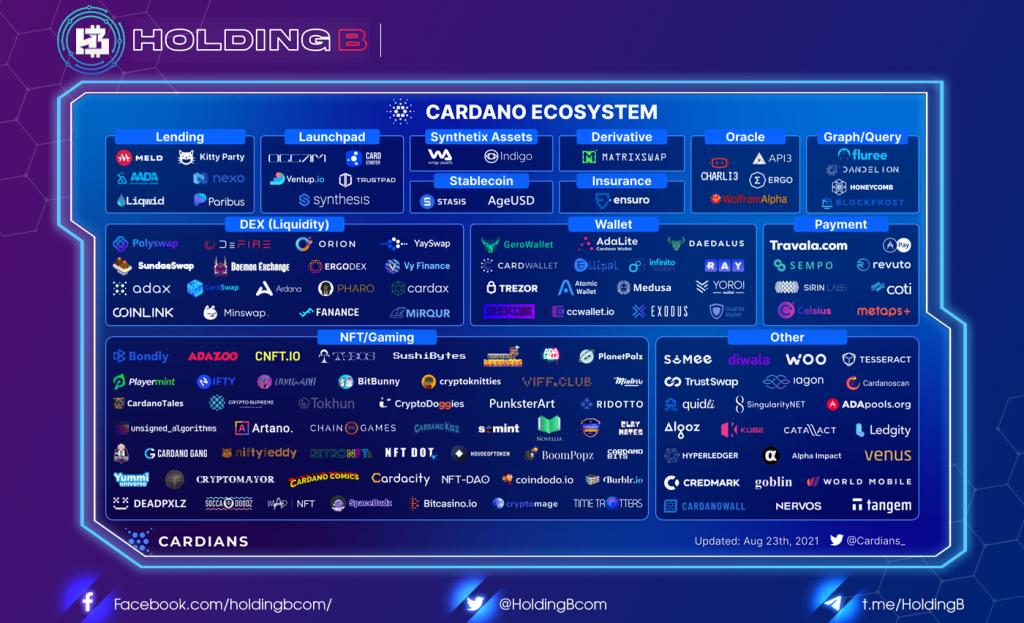
See ya in the next article !
Don’t forget to follow useful articles about Crypto Market from team Holding B !!!
- Telegram Channel: https://t.me/HoldingBcom
- Telegram Group: https://t.me/HoldingB
- Website: https://holdingb.com/
- Twitter: https://twitter.com/HoldingBcom
- Facebook: https://www.facebook.com/holdingbcom



